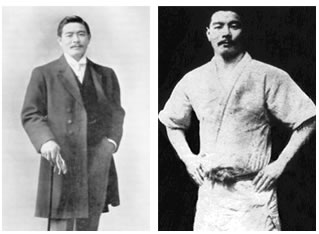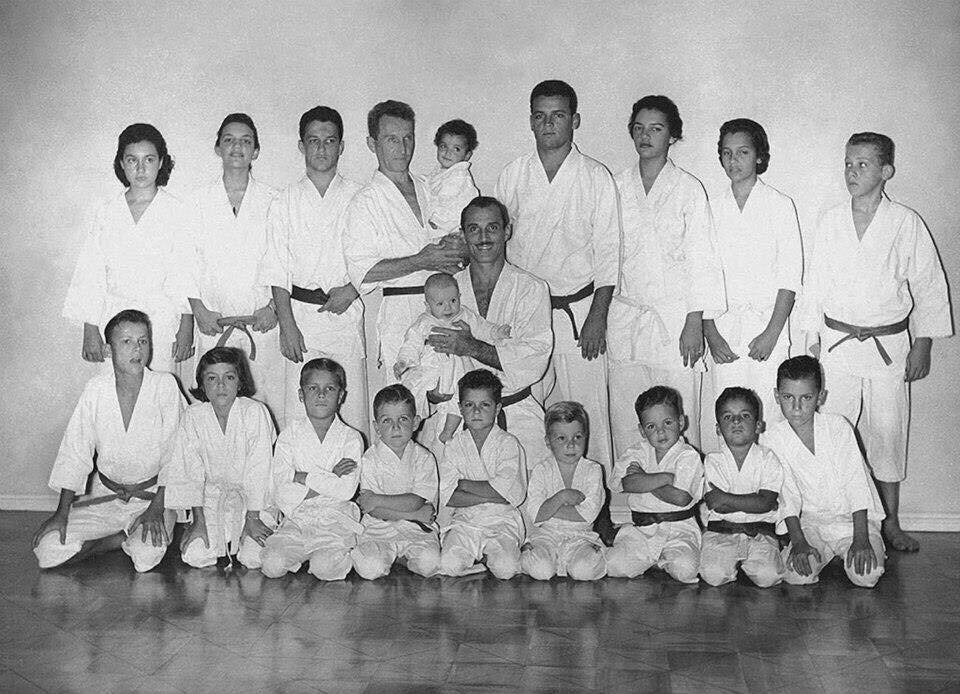Where did Jiu Jitsu originate?
Jiu Jitsu is a martial art that originated in Japan, with a long history dating as far back as the 1500s. It is known for its focus on grappling and ground fighting, and is often referred to as the “gentle art” (the literal translation of the phrase jujitsu) due to its emphasis on technique and leverage over raw strength and power.
The origins of Jiu Jitsu can be traced back to the samurai warriors of Japan, who developed a system of close-combat fighting that was designed to be used in situations where weapons were not practical. Jujutsu was passed down through the generations and was taught to the warriors of the samurai class as part of their training. It was also taught to members of the general population for self-defense purposes.

As time passed, the art of jujutsu evolved and split into various styles, each with its own unique techniques and philosophies. One of these styles was called judo, which was developed in the late 19th century by Jigoro Kano.
Kano was a student of jujutsu and was deeply interested in the martial art’s history and techniques. He spent years studying and practicing jujutsu, and eventually developed his own system. Kano’s judo incorporated many of the techniques of jujutsu, but he also added new techniques and principles that he believed were more effective and efficient. He also removed many of the more dangerous and lethal techniques from the art, making it safer and more suitable for sport and competition.
Judo would go on to become very popular in Japan and was eventually the rest of the world. It was included as an Olympic sport in 1964 and today is one of two grappling martial arts to be in the Olympics (the other being wrestling).
Judo has had a significant influence on the development of modern Jiu Jitsu, and many Jiu Jitsu techniques and principles can be traced back to judo. However, Jiu Jitsu has also been influenced by other martial arts such as wrestling and Brazilian capoeira. Despite their intertwined history, both martial arts still exist today in their own right and are practiced and enjoyed by millions of people.

Judo match in 1951 (Source: PICRYL Public Domain)
The evolution of brazilian jiu jitsu
Mitsuyo Maeda was a skilled Japanese martial artist and practitioner of judo who is credited with introducing judo to Brazil. In the early 20th century, Maeda traveled to Brazil as part of a group of Japanese immigrants who were looking to start a new life in the country. While in Brazil, Maeda met a Brazilian politician named Gastão Gracie. The pair struck up a friendship and Maeda introduced Gracie to the art of Judo.
Maeda agreed to teach judo to Gracie’s son, Carlos, and a group of other Brazilian students. He saw this as an opportunity to promote judo and spread the art to a new country. He spent several years teaching judo in Brazil and was instrumental in helping to establish the art across the country.
After learning from Maeda, Carlos Gracie was fascinated by the effectiveness of judo, and began to study and practice the art intensely. He would continue to train with his brothers and eventually developed his own system based on judo, which he called Brazilian Jiu Jitsu (BJJ).

The style of Jiu Jitsu developed by the Gracie brothers was characterized by its emphasis on ground fighting and submission holds, and it placed a particular emphasis leverage and technique. This made it well-suited for self-defense situations, as a smaller and weaker person could rely on these techniques against larger attackers.
The Gracie brothers opened a martial arts academy in Brazil and began teaching their system of Jiu Jitsu to students. The Gracie family’s academy became very popular and attracted many students from all over Brazil and eventually, the world.
In the decades following, BJJ has grown massively and it is now one of the most popular martial arts for both sport and self-defense. It is known for its effectiveness in real-life situations and has gained a reputation as one of the most effective martial arts for close-combat fighting.
Despite the fact that Jiu Jitsu and Brazilian Jiu Jitsu have distinct differences and backgrounds, nowadays the terms “Jiu Jitsu” and “Brazilian Jiu Jitsu” get used interchangeably, and most of the time when people use them they are referring to modern-day BJJ.

Wondering what it’s like to take a class in BJJ? Check out this article.
Summary: Timeline of BJJ History
- Late 1800s: Mitsuyo Maeda, a Japanese judoka and one of the first Japanese professional wrestlers, immigrates to Brazil and begins teaching judo to the Gracie family.
- 1920s: Carlos Gracie, one of Maeda’s students, begins teaching judo, which he refers to as “Brazilian jiu-jitsu,” to others in Brazil.
- 1980s: The Gracie family, particularly Carlos’s son Rorion, begins promoting Brazilian jiu-jitsu in the United States through the Ultimate Fighting Championship (UFC), a martial arts tournament that allows practitioners of various styles to compete against each other.
- 1990s: Brazilian jiu-jitsu becomes popular in the United States and other parts of the world, with many gyms and schools opening up to teach the style.
- 2000s: Brazilian jiu-jitsu continues to grow in popularity, with numerous competitions and tournaments being held around the world.
- 2010s: Brazilian jiu-jitsu becomes an officially recognized Olympic sport and is included in the Olympic Games for the first time.
- Buggy Choke: The Complete Guide - March 6, 2024
- Jiu Jitsu World League: Your Complete Guide - March 5, 2024
- How much do UFC referees make? A comprehensive guide - March 5, 2024








